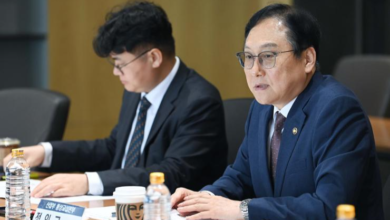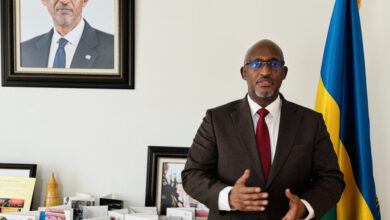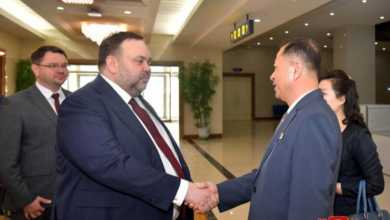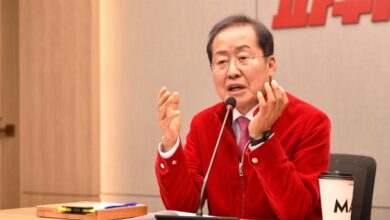Asia
Korean deaf LGBT activists create new signs to express identities with pride

Deaf activists come forward to eliminate hate, prejudice against sexual minorities in Korean Sign Language
By Lee Hae-rin
Woo Ji-yang, 33, is a deaf gay man based in the southern city of Busan. For most of his life, he felt shame and humiliation when he introduced his sexual identity in Korean Sign Language (KSL). The manual sign for “gay” in KSL describes an act of anal intercourse between two men.
Gyeonggi-based gay man Kim Bo-seok, 34, confessed he has lived through dilemma similar to that of Woo. He has been a bridge between the hearing and deaf community as a child of deaf parents and a sign language researcher studying KSL for his Ph.D., but the sign language expressions that contain overly sexualized and degrading connotations of sexual minorities have made him hesitate to come out and live freely for a long time.
Similarly, the sign language expression for “lesbian” in Korea visualizes a particular act of intercourse ― two women rubbing bodies against each other. Such expressions are often used with frowns upon sign translators’ faces, although the sign does not contain any use of negative facial expressions by definition. Most importantly, they are “offensive and misleading terms, which can arouse self-contempt from an LGBT signer’s perspective,” Woo and Kim said during a recent interview with The Korea Times.
So they gathered with likeminded deaf sexual minorities in December 2019 and formed an advocacy group titled Korean Deaf LGBT, to create alternative languages that they can use with pride and respect. Because they believe “language must be shaped by those who use it.”
Problems with KSL
The KSL expressions that have made Kim and Woo ― and most likely the rest of the undocumented deaf sexual minorities in the country ― feel uncomfortable about expressing their sexual identities, are, surprisingly, official sign expressions registered in the KSL dictionary authorized by the National Institute of Korean Language.
The Ministry of Culture, Sports and Tourism, which oversees the national language institute, declared it would standardize KSL and spread the use of sign language to enhance the life and education of deaf people in 2000. As a result, the institute published the KSL dictionary as a joint project with the Korean Association of the Deaf five years later.
With the enactment of the Korean Sign Language Act in 2016, KSL earned status equal to that of spoken Korean and was recognized as an independent and native language used by deaf Koreans. In April 2017, the dictionary was developed online to ease the access of KSL terms to more deaf and hearing people, featuring videos, drawings and explanations.
However, most of the terminologies contained in this dictionary are “far from actual expressions used by deaf people,” and fail to fully represent the deaf community, the two activists said. Spoken languages, which, by their nature, tend to evolve like a living organisms over time by people who use them. On the other hand, the standardization of KSL at the time failed to recognize sign language as an independent language and was rather based on an artificial translation of spoken Korean, without sufficient reflection of the deaf culture.
Lee Jun-woo, a professor of social welfare at Kangnam University, who has led several governmental and academic studies on KSL and heads the Association of Korean Sign Language Studies, agreed with the limitations of the past KSL standardization project, while highlighting the last generation of scholars’ good intentions to democratize sign language. The academic circle has only recently started to see a paradigm shift to viewing KSL as an independent language and appreciating deaf signers’ discourse as linguistic resources since about a decade ago.
Although KSL and deaf studies have changed, the progress in real life seemed too slow to catch up the fast-changing human rights agenda, the activists said. As long as the only language they were given to identify themselves was rooted in the prejudice and hatred of the LGBT community, the country’s deaf sexual minorities won’t be able to speak up for a better life, they thought.
Creating alternative sign expressions
When Woo, Kim and fellow activists gathered in 2019 to create alternative signs they could use with pride and respect, their initial goal was to make four basic terms ― lesbian, gay, bisexual and transgender ― which make up the acronym, LGBT. However, once the project kicked off, they soon realized they needed a lot more than four expressions to create any meaningful discourse within the deaf LGBT community in the country.
With the help of the Human Rights Film Festival in Seoul and the sponsorship of the Daum Foundation, the group presented 37 new sign expressions associated with gender identity, sexual orientation and Korean queer culture in April 2021.
In that process, Woo and Kim said the group referred to the works of other deaf LGBT communities in Asia, where the language for deaf sexual minorities has been discussed and developed more systematically with a longer history. Woo, for example, participated in deaf community events and LGBT festivals in Thailand and Japan in 2018 and witnessed how hundreds of deaf LGBT people gather to celebrate deaf pride and exchange feedback on the use of related sign expressions.
At that moment, as someone who has been challenged for most of his lifetime to self-identify as a deaf gay man, Woo became convinced that his home country needs a similar network. He wishes that his peers and the next generation of deaf sexual minorities won’t have to go through the painful confusion he had gone through and instead live with a pride.
The group concluded that the key to creating alternative signs is to reflect the thoughts and discourses of deaf people of diverse sexual identities, including gays, lesbians, asexuals and pansexuals.
The alternative sign expressions the group presented to the world were very different from the standard ones of the KSL. For example, their new sign for “gay” expresses “a man who is attracted to another man,” to emphasize their sexual orientation, by a right fist with a thumb up moving forward from one’s chest. The alternative sign expression for “marriage,” on the other hand, was adopted from the standard KSL term that means celebration, which gestures fireworks and an arch of flowers ― with a fist clenching and unclenching three times over one’s face, moving to the right. In contrast, the older, standard KSL expression visualizes the union of a man and a woman.
Many new terms that are not in the KSL dictionary, including “queer,” “non-binary,” “coming out” and “ally,” were newly created. The group also differentiated between HIV and AIDS, which had never been differentiated in the previous KSL dictionary, and have been wrongly used with frowns by translators. A total of 37 gender-neutral expressions that are free from prejudice against sexual minorities came to see the light of day in publications and websites.
Challenges ahead
These new expressions were welcomed on social media and widely used by many deaf sexual minorities, allies and human rights advocacy groups around them, they said. However, the challenge lies ahead for the expressions to be available for the entire signing population in the country, which amounts to over 340,000 deaf and over 3,000 sign language interpreters.
Amid the COVID-19 pandemic, media accessibility for deaf people has become a social issue in Korea. The regular briefing by the Korean Disease Control and Prevention Agency (KDCA) introduced live sign interpretation next to the spoken announcement, while the need for the improvement of the working conditions for sign translators in television broadcasts has received some attention in the local newspapers.
However, the amount of information accessible to deaf people is still relatively small and limited, said Lee, as basically all media communications in the country are “spoken-Korean-centered.” The activists agreed that there is no common platform or institution for deaf discourses in Korea where ideas, information and newly created terms can be spread and shared.
The low quality of the existing sign interpretations broadcast is another challenge, because they leave little room for the discussion and development of new sign expressions, according to the activists.
The group and their deaf peers think only 20 percent of the sign interpretations provided in media and daily life are understandable. Lee, who led research in deaf communication at the National Institute of Korean Language in 2020, also said that the average percentage that deaf people understand of sign interpretations is far lower than 50 percent.
The professor explained that the current KSL interpretation licensing system fosters generalists. The Korea Association of the Deaf, an organization which oversees the government certification system of sign interpretation, told The Korea Times it recognizes the need to advance sign interpretation quality by subdividing translators’ areas of specialty in training and career, and plans to improve the system, although it did not give a timeline to achieve those goals.
In response, the group has been monitoring sign interpretations provided in events held by human rights groups since March of 2021 and provided detailed reports with suggestions to improve translation quality. Lee said that more feedback from deaf people on sign language interpretation services needs to be heard in order to advance the country’s use of KSL.
By the end of this year, Korean Deaf LGBT plans to file a formal complaint to the National Institute of Korean Language to remove the existing sign expressions, which they believe are based on prejudice against LGBT people, from the KSL dictionary. The activists think that it might be difficult for the expressions they created to be registered on the dictionary, but they feel strongly that the language of the past, which spreads shame and hatred against minorities, should no longer be used.
In the future, the group wishes to bring more diverse deaf people together to lead human rights activism in the deaf community. All deaf people have double identities as minorities ― as they are deaf LGBT people, some could be deaf workers, deaf women and deaf youth ― and they wish to build a new momentum in the deaf human rights movement.
“For that, we believe we all need to come together ― the deaf and hearing people, as well as the sign translators,” Kim said.
“In reality, there is still a huge gap between the hearing and deaf communities,” Woo said. In that sense, his favorite KSL expression is “connection,” which gestures a connection of two circles made with one’s index fingers touching the thumbs of both hands.
The interview with Woo Ji-yang and Kim Bo-seok was interpreted by Myung Hye-jin, a KSL translator and researcher at the Korea Critical Incident Stress Management (CISM) Research Institute.
Read the full article here








